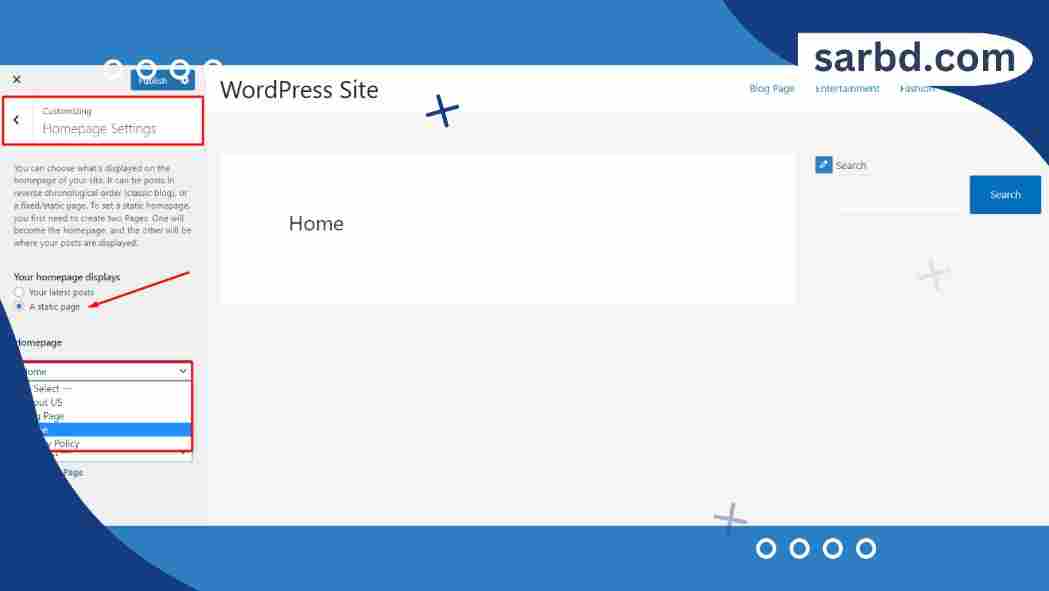Mastering the Art of WordPress Forms: A Comprehensive Guide
Forms are a critical part of any website. Whether it’s to collect user data, enable subscriptions, or support customer inquiries, the importance of well-designed and functional forms can’t be overstated. One of the most popular and versatile platforms for creating forms is WordPress. In this post, we will dive deep into the world of WordPress forms, discussing everything from the best form plugins to advanced customization techniques. Mastering the Art of WordPress Forms: A Comprehensive Guide
By the end of this post, you’ll know exactly how to create, customize, and optimize WordPress forms for your website. We’ll also include useful tips and resources to enhance your WordPress form experience, allowing you to build forms that engage your audience, gather crucial information, and streamline interactions with your users.
Why WordPress Forms Matter
In today’s competitive online environment, user engagement is crucial. One of the most effective ways to gather valuable information, whether through contact forms, surveys, or lead-generation forms, is via a well-constructed WordPress form. Let’s take a deeper look at why forms are essential:
- User Interaction: Forms provide users with a way to communicate directly with you. Whether it’s a simple contact form or a detailed survey, a well-designed WordPress form can significantly enhance user interaction and website engagement.
- Data Collection: Forms are an excellent way to collect data. Whether you’re collecting emails for a newsletter, gathering feedback, or obtaining customer details, the information you gather via a WordPress form is essential for making informed decisions about your website.
- Conversions: If you’re running an e-commerce website or any business site, forms are pivotal in your sales funnel. A WordPress form can act as a lead-generation tool, converting visitors into customers by gathering important information that can be used to nurture relationships.
- Customization and Flexibility: With WordPress form plugins, you can customize forms to suit the needs of your business, from simple contact forms to multi-step, dynamic forms that interact with user input.
- Security: Protecting user data is crucial, and WordPress form plugins often offer essential features like CAPTCHA, anti-spam filters, and SSL encryption to ensure your forms are secure.
The Best WordPress Form Plugins
When it comes to building forms on WordPress, there are several powerful plugins available. Here are the best plugins for creating WordPress forms:
1. WPForms
- Drag-and-Drop Builder: WPForms is user-friendly, with a simple drag-and-drop builder that lets you create custom forms without any coding knowledge. Whether you need a contact form, payment form, or registration form, WPForms simplifies the process.
- Templates: WPForms comes with several pre-designed templates, making it easier for beginners to create a WordPress form in minutes. These templates are fully customizable, so you can adjust them to meet your needs.
- Responsive Design: The forms created with WPForms are fully responsive, ensuring they look great and function well on all devices, from desktops to smartphones.
- Spam Protection: WPForms includes built-in anti-spam features such as CAPTCHA and honeypot fields, ensuring that your forms remain free from spam and bots.
- Integration: WPForms integrates with popular email marketing services, including Mailchimp, AWeber, and Constant Contact, making it easy to collect and manage subscriber data directly from your WordPress form.
- Payment Options: WPForms offers integration with payment processors like PayPal and Stripe, allowing you to accept payments through your forms.
- Conditional Logic: This feature allows you to show or hide fields based on user input, making your forms more dynamic and engaging.
2. Ninja Forms
- Free and Premium Versions: Ninja Forms offers both a free version and a premium upgrade. The free version comes with essential features for building simple forms, while the premium version unlocks advanced tools for more complex forms.
- Drag-and-Drop Interface: Similar to WPForms, Ninja Forms has a drag-and-drop interface, which simplifies the process of creating forms. You can build custom WordPress forms quickly without needing to write any code.
- Add-ons and Extensions: Ninja Forms offers a wide range of add-ons, including integrations with CRM platforms, payment gateways, and email marketing tools. This flexibility makes Ninja Forms suitable for businesses of all sizes.
- Responsive and Accessible: The forms are mobile-responsive and accessible to users with disabilities, ensuring you can cater to a broader audience.
- Conditional Logic: Like WPForms, Ninja Forms allows you to create conditional logic fields, enhancing user engagement and making your forms more interactive.
- Multi-Part Forms: Ninja Forms lets you create multi-part forms for collecting detailed information without overwhelming users with long forms.
- Custom CSS: For advanced users, Ninja Forms allows for extensive customization through CSS, giving you complete control over the appearance of your forms.
3. Gravity Forms
- Advanced Features: Gravity Forms is known for its powerful, advanced features, making it a top choice for developers and power users. It supports multi-page forms, file uploads, conditional logic, and more.
- Wide Range of Integrations: Gravity Forms integrates with a wide variety of third-party services, including email marketing platforms, CRMs, and payment gateways like PayPal and Stripe.
- Conditional Logic: One of the standout features of Gravity Forms is its ability to use conditional logic to create dynamic forms. This feature can significantly enhance the user experience by tailoring the form to the individual user’s needs.
- Payment and Order Forms: Gravity Forms allows you to create payment forms for selling products or collecting donations. You can integrate with payment processors to accept secure payments directly through your forms.
- Responsive Forms: Gravity Forms ensures that all forms are mobile-friendly and responsive, making sure your WordPress form looks great on any device.
- User Registration Add-on: With Gravity Forms, you can easily create user registration forms, perfect for membership sites or online communities.
- Spam Protection: Gravity Forms offers robust spam protection features, including Google reCAPTCHA and Akismet integration, ensuring your forms remain spam-free.
Customizing Your WordPress Form for Maximum Impact
Creating a form is just the first step. To get the most out of your WordPress form, you need to customize it for your audience and goals. Here’s how you can make your forms more effective:
1. Tailor Your Forms to Your Audience
- Understand Your Audience: Before you create your form, think about your target audience. Are they tech-savvy? Do they prefer short forms or long, detailed ones? Knowing your audience helps you design a form that meets their needs and increases engagement.
- Keep It Simple: Don’t overload your users with too many fields. A simple, concise WordPress form is more likely to be completed. Stick to the essentials and ask only for the information you truly need.
- Provide Clear Instructions: If certain fields require specific input (like a phone number in a particular format), provide clear instructions to avoid confusion. Clear, concise labels and tooltips can improve the user experience.
- Use Placeholder Text: Placeholder text in form fields helps users understand what type of information is expected. This small detail can significantly improve the usability of your WordPress form.
- Group Related Fields: If your form has multiple sections, group related fields together. For example, if you’re collecting personal information, put all the relevant fields (name, email, phone number) in the same section.
- Add Descriptive Error Messages: Users can get frustrated if they encounter errors without knowing how to fix them. Be sure to add descriptive error messages that guide users toward resolving any issues with their input.
- Test for Mobile Users: Ensure your form is mobile-responsive, as a significant portion of your audience will likely access your website via smartphones. A form that doesn’t work well on mobile could lead to missed opportunities.
2. Add Conditional Logic for Personalization
- Customize the User Experience: Conditional logic allows you to personalize the form experience based on user input. For example, if a user selects “business inquiry,” you can display additional fields related to their business details, while hiding those fields for users with different inquiries.
- Reduce Form Length: Conditional logic can help reduce the perceived length of your form. By showing only the relevant fields based on user selections, you can make your form appear shorter and more user-friendly.
- Improve Conversion Rates: Forms that adapt to user input tend to have higher completion rates. Users are more likely to finish a form that feels tailored to their specific needs, rather than a generic, one-size-fits-all approach.
- Segment Your Audience: Conditional logic can help you segment your audience based on their responses. For instance, you could ask users what industry they work in, and then direct them to specific resources or products based on their answer.
- Create Multi-Step Forms: Breaking a long form into multiple steps can make it feel less overwhelming. With conditional logic, you can guide users through different steps based on their initial responses, creating a more personalized experience.
- Show Progress Bars: If you’re using a multi-step form, include a progress bar to show users how far along they are. This small addition can reduce form abandonment by letting users know they’re almost done.
- Offer Optional Fields: Conditional logic allows you to offer optional fields without cluttering the form. For example, you could ask if users want to provide additional details, and if they say yes, the form would display those fields.
WordPress Form Best Practices
Creating an effective WordPress form goes beyond just adding fields and buttons. By following these best practices, you can ensure that your forms are user-friendly, engaging, and optimized for conversions.
1. Optimize for SEO
- Use SEO-Friendly Form Titles: The title of your WordPress form plays a role in SEO. Ensure that it is descriptive and includes relevant keywords. For example, instead of naming your form “Contact Us,” you could call it “Get in Touch with [Your Brand Name].”
- Use Alt Text for Form Buttons: If your form includes images or buttons, make sure to include alt text that describes the action. This not only improves accessibility but can also have a positive impact on SEO.
- Create a Separate Form Page: Instead of embedding forms on every page, consider creating a dedicated form page that is optimized for SEO. You can include keywords, meta descriptions, and relevant content that supports the purpose of the form.
- Use Structured Data: Structured data, like Schema markup, can help search engines understand the purpose of your form. If you’re using a lead generation form, for instance, structured data can indicate that the form is collecting contact information.
- Link to the Form from Multiple Pages: Internal linking is a key component of SEO. Make sure to link to your WordPress form from multiple pages on your site to improve its visibility and encourage more users to interact with it.
- Track Form Conversions with Google Analytics: Use Google Analytics to track form submissions and conversions. By analyzing the data, you can optimize your forms for better performance, improving your overall SEO strategy.
- Promote Your Forms: Use social media, email newsletters, and other marketing channels to promote your forms. The more traffic you drive to your forms, the more data you’ll collect, which can be used to improve SEO over time.
2. Ensure Accessibility
- Label Your Fields Clearly: Ensure that each form field is clearly labeled so users know exactly what information is required. This is especially important for users with disabilities who may rely on screen readers to navigate your site.
- Use ARIA Labels: ARIA (Accessible Rich Internet Applications) labels can improve the accessibility of your forms. These labels help assistive technologies like screen readers understand what each field in your form is for.
- Keyboard Navigation: Ensure that your form can be navigated entirely by keyboard. This is important for users who may not be able to use a mouse or touchscreen.
- Use High Contrast: Make sure your form fields and text have a high contrast ratio to ensure readability for users with visual impairments. Low contrast can make it difficult for some users to read the text or interact with form elements.
- Avoid CAPTCHA Overuse: While CAPTCHA is important for spam prevention, overusing it can create barriers for users with disabilities. Consider using invisible CAPTCHA or honeypot fields to reduce friction while maintaining security.
- Provide Error Feedback: Ensure that error messages are accessible to all users, including those using screen readers. Descriptive error messages can help guide users through the process of fixing mistakes without creating frustration.
- Test Your Form’s Accessibility: Use tools like WAVE or Axe to test the accessibility of your forms. These tools will highlight any issues that could prevent users with disabilities from interacting with your form effectively.
Secure Your WordPress Forms
Security should be a top priority when creating forms, especially if you’re collecting sensitive information like payment details or personal contact information. Here’s how to secure your WordPress form:
1. Use HTTPS
- SSL Encryption: Ensure that your website uses HTTPS. This encrypts the data submitted through your forms, making it more difficult for hackers to intercept and steal sensitive information.
- User Trust: HTTPS not only secures your forms but also boosts user trust. When users see the padlock icon in their browser, they’re more likely to submit their information through your WordPress form.
- SEO Benefits: Google gives a ranking boost to sites that use HTTPS, so securing your forms can also have a positive impact on your SEO efforts.
- Protect Sensitive Information: If your form collects sensitive information, such as passwords or payment details, HTTPS is essential for ensuring that data is transmitted securely.
- Required for Payment Forms: If you’re using a payment form on your site, HTTPS is mandatory. Most payment processors, like PayPal and Stripe, will not work with sites that don’t use SSL encryption.
- Improved Credibility: Having HTTPS on your website signals to users that you take their privacy seriously, which can improve the overall credibility of your site.
- Compliance: Many privacy laws, such as GDPR and CCPA, require websites to use secure methods for collecting and processing personal data. HTTPS helps ensure that your forms are compliant with these regulations.
2. Add CAPTCHA and Anti-Spam Measures
- CAPTCHA Integration: CAPTCHA helps prevent bots from submitting forms on your site. While it may add a small inconvenience for users, it’s a necessary tool for reducing spam submissions.
- Honeypot Fields: Honeypot fields are invisible to human users but visible to bots. When a bot fills out a honeypot field, the form automatically rejects the submission, reducing the amount of spam you receive.
- ReCAPTCHA: Google’s reCAPTCHA is a popular tool for preventing spam. It’s easy to integrate into most WordPress forms and provides robust protection against automated submissions.
- Akismet Integration: Akismet is a powerful anti-spam plugin for WordPress. It works by checking form submissions against a global database of known spam, ensuring that only legitimate submissions make it through.
- Limit Form Submissions: If your forms are receiving a lot of spam, consider limiting the number of submissions from a single IP address within a certain time frame. This can prevent bots from bombarding your forms with multiple submissions.
- Block Suspicious IPs: Many WordPress security plugins allow you to block specific IP addresses. If you notice that spam is coming from a particular IP, you can block it to prevent further submissions.
- Monitor Form Activity: Keep an eye on your form activity to spot any unusual patterns, such as a spike in submissions from a specific IP address or region. Monitoring can help you identify potential security threats before they become a problem.
Conclusion
Creating a functional and secure WordPress form is essential for improving user engagement, collecting valuable data, and ensuring a positive user experience. By choosing the right plugin, customizing your forms to suit your audience, following best practices for SEO and accessibility, and implementing robust security measures, you can build powerful forms that help you achieve your website goals.
If you’re looking to take your WordPress forms to the next level with advanced features and easy-to-use tools, consider using this recommended plugin that simplifies form creation and management.




